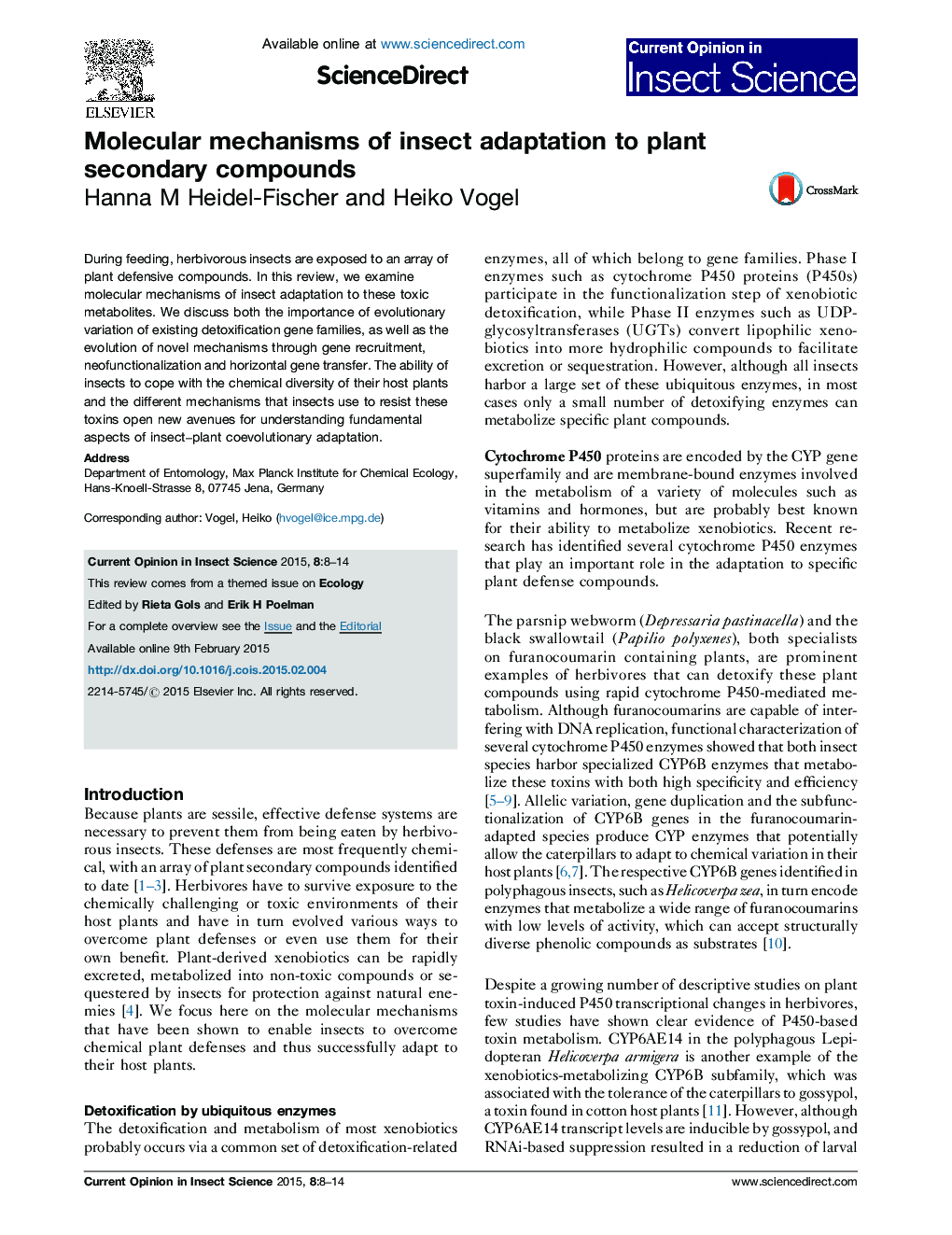| Article ID | Journal | Published Year | Pages | File Type |
|---|---|---|---|---|
| 4508230 | Current Opinion in Insect Science | 2015 | 7 Pages |
•Insect–plant coevolution is driven by novel plant chemicals and insect counter-adaptations.•Allelic variation, gene duplication and over-expression alter herbivore gene function.•Evolutionary recruitment and horizontal gene transfer result in new herbivore gene functions.•Convergent evolution allows adaptation to specific plant toxins across insect orders.
During feeding, herbivorous insects are exposed to an array of plant defensive compounds. In this review, we examine molecular mechanisms of insect adaptation to these toxic metabolites. We discuss both the importance of evolutionary variation of existing detoxification gene families, as well as the evolution of novel mechanisms through gene recruitment, neofunctionalization and horizontal gene transfer. The ability of insects to cope with the chemical diversity of their host plants and the different mechanisms that insects use to resist these toxins open new avenues for understanding fundamental aspects of insect–plant coevolutionary adaptation.
